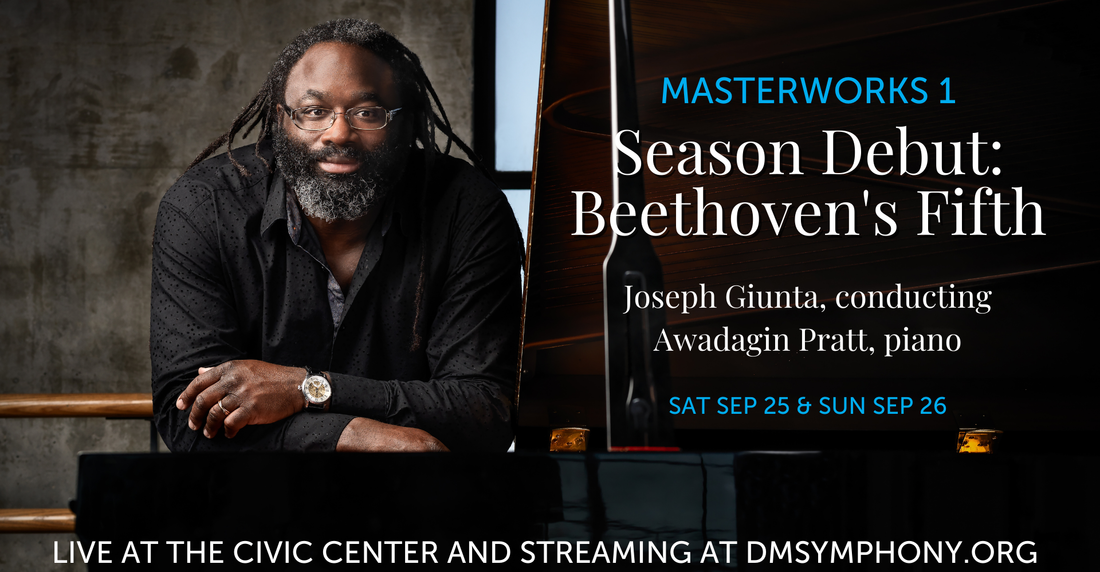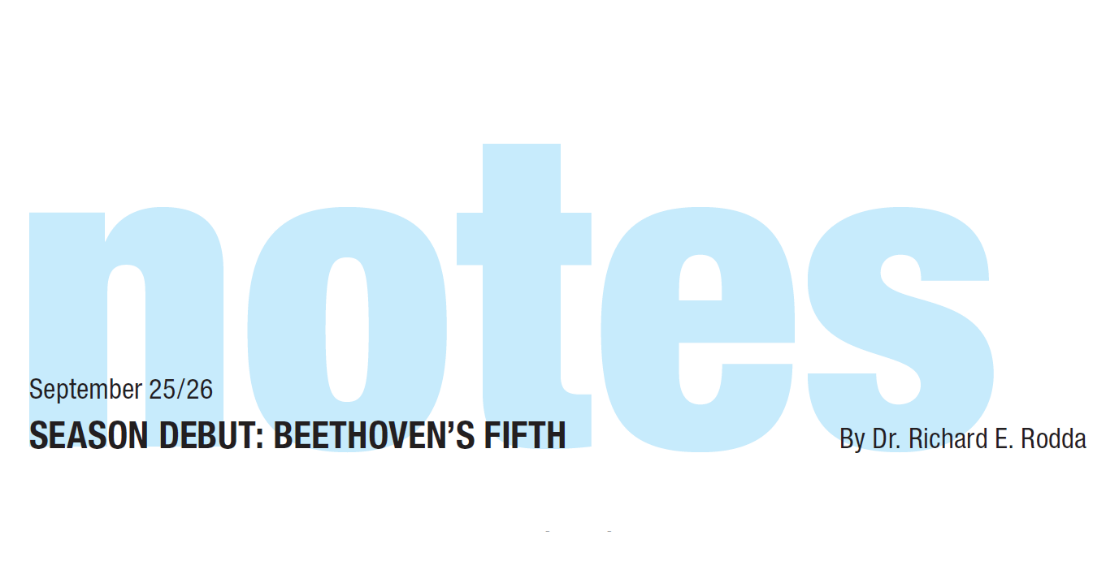
Read about the music and composers featured in our Season Debut, Beethoven's Fifth on September 25 & 26, 2021.
JOHN CORIGLIANO has a résumé unmatched by any other American composer — Pulitzer Prize, Grawemeyer Award, five Grammy Awards, an Oscar (for The Red Violin), and recognition in 1992 as Musical America’s first “Composer of the Year.” Joseph Haydn wrote a “Farewell” Symphony, in which the players gradually leave the stage as the piece ends. Corigliano’s Promenade Overture reverses that procedure to gather together the musicians of the ensemble, and is the perfect opening for a new season and the return of the Des Moines Symphony to performing live in the Civic Center, a symphonic “hello again.” FLORENCE PRICE was the first African-American woman to have a symphonic work performed by a major American orchestra when the Chicago Symphony premiered her Symphony in E Minor in 1933. That work was so successful that she was encouraged to compose a Piano Concerto the following year, in which she was soloist in June 1934 at Orchestra Hall in Chicago. This Des Moines Symphony concert closes with two of the most powerful works of LUDWIG VAN BEETHOVEN — the Egmont Overture and the Symphony No. 5, which begins with “the most famous four notes in music.”
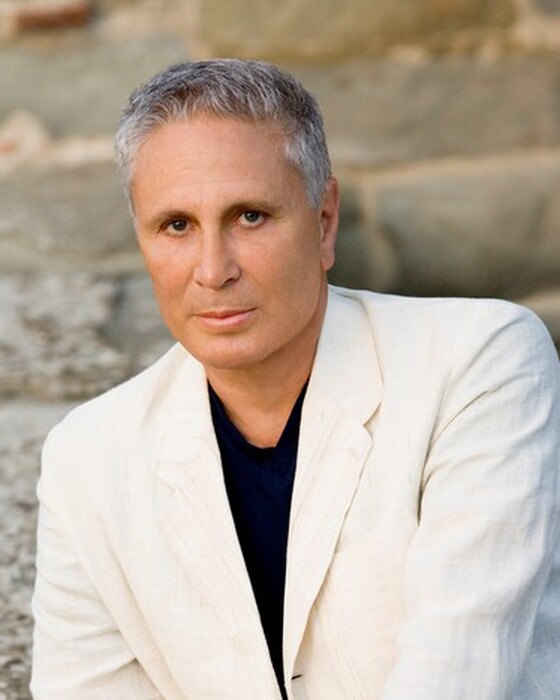
JOHN CORIGLIANO
Born February 16, 1938 in New York City.
PROMENADE OVERTURE
• First performed on July 10, 1981 by the Boston Symphony Orchestra with John Williams conducting.
• These concerts mark the first performance of this piece by the Des Moines Symphony.
(Duration: ca. 8 minutes)
John Corigliano, one of today’s most prominent and frequently performed American composers, was born in New York City in 1938, and raised in a family rich in musical talent — his father, John, Sr., was for many years the concertmaster of the New York Philharmonic and his mother was an accomplished pianist and teacher. From 1955 to 1960, Corigliano studied at Columbia University with Otto Luening and at the Manhattan School of Music with Vittorio Giannini. After graduating with honors from Columbia, Corigliano worked for three years as a programmer and writer for New York radio station WQXR; from 1961 to 1963, he was music director of station WBAI, also in New York. He served as Composer-in-Residence with the Chicago Symphony Orchestra from 1987 to 1990, and is Distinguished Professor of Music at Lehman College of the City University of New York, which has established a composition scholarship in his name; he has also been on the faculty of the Juilliard School of Music since 1991.
Corigliano’s large and varied creative output — the acclaimed opera The Ghosts of Versailles (commissioned by the Metropolitan Opera); the First Symphony (inspired by friends he lost to AIDS); concertos for oboe, clarinet, flute, guitar and piano; orchestral music; vocal and choral compositions with and without instrumental accompaniment; piano and chamber pieces; film scores — has gained wide acclaim in performances and recordings, and been recognized with such distinguished honors as the Pulitzer Prize, Grawemeyer Award, five Grammy Awards, the Horblit Prize and an Academy Award (for The Red Violin). In 1992, Musical America named John Corigliano as that publication’s first “Composer of the Year.” Corigliano’s most recent composition, premiered by Santa Fe Opera in July 2021, is The Lord of Cries, with a libretto by composer and writer Mark Adamo, which explores the “intriguing intersections between two classics of Western literature — The Bacchae by Euripides and Dracula by Bram Stoker — to warn of the monster within us, not around us.”
Corigliano wrote of his Promenade Overture, “The premise of this work took root years ago when I was caught off guard by Haydn’s delightful ‘Farewell’ Symphony. This Haydn work is often used to end a concert because during the last movement the players gradually exit, leaving two violins to finish the Symphony on a bare stage. Since overtures usually begin concerts, a reverse of this procedure — the entrance of an orchestra while playing — became both an interesting idea and a compositional challenge. “Offstage brass announce the start of the Promenade Overture, with the trumpets playing the last five measures of the ‘Farewell’ Symphony — backwards. This forms a fanfare announcing the promenade of the performers, which starts with the piccolo, concludes with the tuba, and contains a variety of motives which eventually form a lyrical melody that is built to a climax by the full orchestra.”
The score calls for piccolo, two flutes, two oboes, two clarinets, two bassoons, four horns, four trumpets, three trombones, tuba, timpani, bass drum, suspended cymbal, finger cymbals, snare drum, tenor drum, triangle, tambourine, tam-tam, glockenspiel, xylophone, bell tree, temple blocks, ratchet, harp and the usual strings consisting of first violins, second violins, violas, violoncellos and double basses.
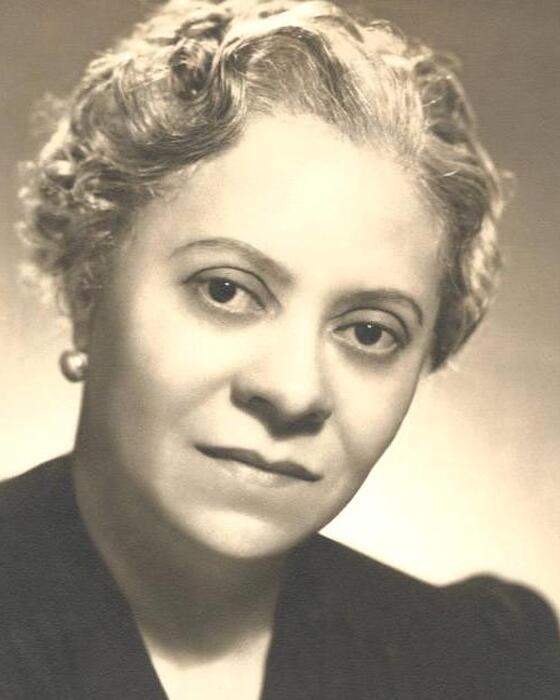
FLORENCE B. PRICE
Born April 9, 1887 in Little Rock, Arkansas;
died June 3, 1953 in Chicago, Illinois.
PIANO CONCERTO IN ONE MOVEMENT
• First performed on June 24, 1934 by the Chicago Musical College Orchestra at Orchestra Hall in Chicago, with the composer as soloist.
• These concerts mark the first performance of this piece by the Des Moines Symphony.
(Duration: ca. 19 minutes)
Florence B. Price was a musical pioneer — one of the first African-American students to graduate from the New England Conservatory of Music, the first African-American woman to have a symphonic work performed by a major American orchestra, the first winner of the composition contest sponsored by the progressive Wanamaker Foundation.
Florence Beatrice Smith was born in 1887 into the prosperous and cultured family of a dentist in Little Rock, Arkansas, and received her first piano lessons from her mother, a schoolteacher and singer; Florence first played in public when she was four. She later also took up organ and violin, and at age fourteen was admitted to the New England Conservatory of Music in Boston, where she studied with George Chadwick and Frederick Converse, two of their generation’s leading composers, wrote her first string trio and a symphony (now lost), and graduated in 1907 with honors for both an artist diploma in organ and a teaching certificate. She returned to Arkansas, where she taught at Arkadelphia Academy and Shorter College before being appointed music department chairman at Clark University in Atlanta in 1910. She returned to Little Rock two years later to marry attorney Thomas J. Price, and left classroom teaching to devote herself to raising two daughters, giving private instruction in violin, organ and piano, and composing.
In 1927, following racial unrest in Arkansas that included a lynching, the Price family moved to Chicago, where Florence studied composition, orchestration, organ, languages and liberal arts at various schools with several of the city’s leading musicians and teachers, and published four pieces for piano soon after settling there. She was also a frequent guest at the home of physician Dr. Monroe Alpheus Majors and organist and music teacher Estelle C. Bonds, and became both friend and teacher to their gifted daughter, Margaret. In 1932, Price and Bonds (then just nineteen) won respectively first and second prize in the Wanamaker Foundation Composition Competition; Price for her Symphony in E Minor and Piano Sonata and Bonds for her song Sea Ghost. The performance of Price’s Symphony on June 15, 1933 by the Chicago Symphony Orchestra, conducted by Frederick Stock, was the first by a major American orchestra of a symphonic work by an African-American woman; the CSO repeated the performance at the Chicago World’s Fair later that year. She continued to compose prolifically — three more symphonies and two more piano concertos, a violin concerto, chamber, piano and organ pieces, songs, spiritual arrangements, jingles for radio commercials — and received numerous performances, including her arrangement of the spiritual My Soul’s Been Anchored in the Lord that Marian Anderson used to close her historic concert at the Lincoln Memorial in Washington, D.C. on April 9, 1939. Florence Price died in Chicago on June 3, 1953.
Price was encouraged by Frederick Stock, conductor of the remarkably successful premiere of her Symphony in E Minor in June 1933, to write a Piano Concerto and appear as soloist in its first performance. She began the work in October 1933, finished the score the following spring, and gave its premiere on June 24, 1934 at a concert celebrating the 67th commencement of the Chicago Musical College, where Price was then a graduate student, with the school’s orchestra. She scored another success with the Concerto — which, according to a reviewer for the Chicago Tribune, “aside from its technical perfections, disclosed thematic substance rich in syncopated and spiritual colors” — and two months later she played the piece in a two-piano arrangement at the annual convention of the National Association of Negro Musicians in Pittsburgh; it was heard again on October 12, 1934, when her protégé Margaret Bonds was soloist in a performance with the Women’s Symphony Orchestra of Chicago at the city’s Century of Progress Exhibition. There were apparently no further performances of the Concerto in its original orchestral form during the composer’s lifetime. The full orchestral score was lost, but the music survived in manuscripts of the solo part with an orchestral reduction, arrangements for two and three pianos, and a partial set of parts for the instruments. Those materials came into the archives of the Center for Black Music Research at Chicago’s Columbia College, which commissioned composer and Drew University professor Trevor Weston to reconstruct the Concerto’s performance materials from them. Pianist Karen Walwyn and conductor Leslie Dunner gave the first performance of Price’s reconstructed Piano Concerto with the Center’s New Black Music Repertory Ensemble on February 17, 2011, and recorded it for Albany Records a month later.
In 2019 a manuscript of the original orchestration surfaced at an auction. After pitching the project to the Philadelphia Orchestra, Cornell University music professors Tamara Acosta and Stephen Spinelli worked with the Orchestra’s music librarian, Nicole Jordan, to resolve any discrepancies or errors in order to restore the original orchestration. In February 2021, Price’s original orchestration of the Piano Concerto in One Movement was performed for the first time in decades by the Philadelphia Orchestra with Michelle Cann as soloist.
Price’s Piano Concerto is in a single movement divided into three distinct sections — Moderato, Adagio, Allegretto — that approximate the scale and form of the traditional genre. The serious mood of the opening Moderato is established by the wind instruments, which introduce the modally inflected motive that provides much of the thematic material for the first section. A piano cadenza leads to the entry of the full orchestra and further development of the modal motive. The Moderato’s emotional and thematic content are given formal balance by an episode based on a march-like melody in a brighter key, but the stern music soon resumes and leads to a full cadence and a brief pause.
After a few transitional phrases in the strings, the poignant, lyrical Adagio begins with a “call” from the oboe followed by a “response” from the piano, recalling a common structure in African-American folk music. The finale is based on the juba, a folk dance performed by enslaved African people, that involves foot-tapping, hand-clapping and thigh-slapping, all in precise rhythm. (Such “body sounds” were unavoidable since enslaved people were forbidden from having drums for fear they might be used to send coded signals.) Price said that the rhythmic element in African-American music is of “preeminent importance. In the dance, it is a compelling, onward-sweeping force that tolerates no interruption,” a quality joyously manifested in the closing section of her Piano Concerto.
The score calls for two flutes, two oboes, two clarinets, two bassoons, four horns, two trumpets, two trombones, bass drum, crash cymbals, snare drum and the usual strings.
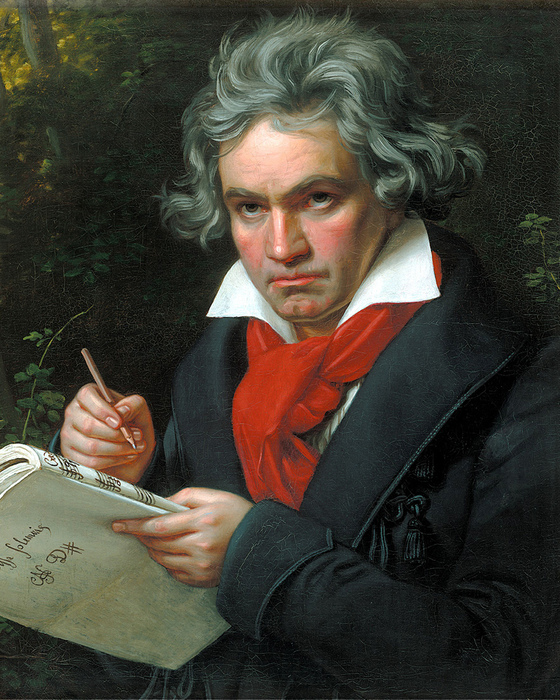
LUDWIG VAN BEETHOVEN
Born December 16, 1770 in Bonn;
died March 26, 1827 in Vienna.
OVERTURE TO GOETHE’S EGMONT, OP. 84
• First performed on June 15, 1810 in Vienna.
• First performed by the Des Moines Symphony on March 20, 1949 with Frank Noyes conducting. Subsequently performed four times, most recently on January 23 & 24, 1993 with Joseph Giunta conducting.
(Duration: ca. 9 minutes)
“The first casualty when war comes,” observed Senator Hiram Johnson in 1917, “is truth.” So when Napoleon invaded Vienna in May 1809, convinced that the Austrian Empire was the major stumbling-block to his domination of Europe, it is not surprising that censorship of literature, the press, and the theater were instituted immediately. The months until the French departed in October were bitter ones for the Viennese. The value of the national currency dwindled, food was in short supply, and freedoms were limited. Soon after the first of the year, with Napoleon’s forces gone, the director of the Hoftheater, Josef Härtel, arranged for the production of a series of revivals of the dramas of Schiller and Goethe, the great figures of the German stage. Appropriately, two plays that he chose dealt with the oppression of a noble people by a foreign tyrant, and of the eventual freedom the patriots won for themselves — Schiller’s William Tell and Goethe’s Egmont.
Beethoven was commissioned to write the music for Goethe’s 1789 play. (Adalbert Gyrowetz was assigned William Tell. Rossini’s setting of the tale was still two decades in the future.) Egmont, based on an incident from 1567, depicts the subjugation of the Netherlands to the tyrannical Spanish rulers, the agony of the people, and their growing defiance and dreams of liberty, and ends with Count Egmont’s call for revolution and his vision of eventual victory in the moments before his execution.
The theme of political oppression overthrown in the name of freedom was also treated by Beethoven in his only opera, Fidelio, and the musical process employed there also served well for Egmont. The triumph of good over evil, of light over darkness, is portrayed through the overall structure of the work: major tonalities replace minor at the moment of victory; bright orchestral sonorities succeed somber, threatening ones; fanfares displace sinuous melodies. The Overture compresses the action of the play into a single musical span. A stark unison begins the introduction. Twice, stern chords from the strings are answered by the lyrical plaints of the woodwinds. The main body of the Overture commences with an ominous melody in the cellos. A storm quickly gathers (note the timpani strokes), but clears to allow the appearance of the contrasting second theme, a quicker version of the material from the introduction. The threatening mood returns to carry the music through its developmental central section and into the recapitulation. A falling, unison fourth followed by a silence marks the moment of Egmont’s death. Organ-like chords from the winds sustain the moment of suspense. Then, beginning almost imperceptibly but growing with an exhilarating rapidity, the stirring song of victory is proclaimed by the full orchestra. Tyranny is conquered. Right prevails.
The score calls for piccolo, flutes, oboes, clarinets and bassoons in pairs, four horns, two trumpets, timpani and the usual strings.
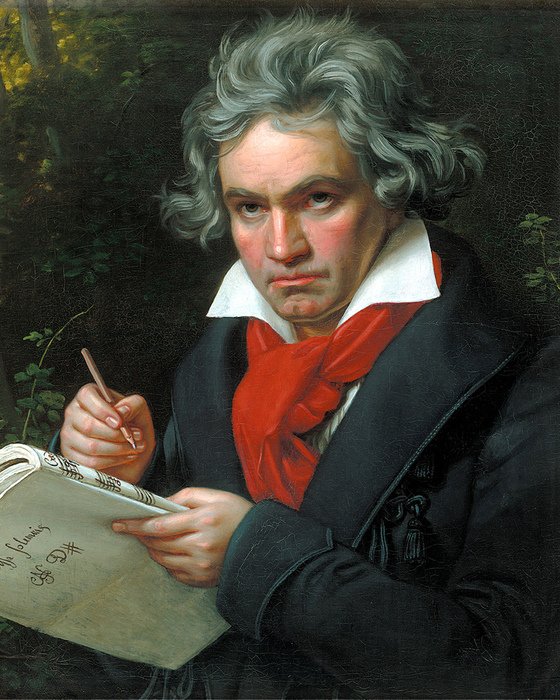
SYMPHONY NO. 5 IN C MINOR, OP. 67
• First performed on December 22, 1808 in Vienna with the composer conducting.
• First performed by the Des Moines Symphony on January 15, 1967 with Frank Noyes conducting. Subsequently performed seven times, most recently on November 15 & 16, 2014 with Joseph Giunta conducting.
(Duration: ca. 35 minutes)
Beethoven’s Fifth Symphony, more than any work in the musical repertory, is the archetypal example of the technique and content of the form. Its overall structure is not one of four independent essays linked simply by tonality and style, as in the typical 18th-century example, but is rather a carefully devised whole in which each of the movements serves to carry the work inexorably toward its end. The progression from minor to major, from dark to light, from conflict to resolution is at the very heart of the “meaning” of this work. The triumphant nature of the final movement as the logical outcome of all that preceded it established a model for the symphonies of the Romantic era. The psychological progression toward the finale — the relentless movement toward a life-affirming close — is one of Beethoven’s most important technical and emotional legacies, and it established for following generations the concept of how such a creation could be structured, and in what manner it should engage the listener.
The opening gesture is the most famous beginning in all classical music. It establishes the stormy temper of the Allegro by presenting the germinal cell from which the entire movement grows. Though it is possible to trace this memorable four-note motive through most of the measures of the movement, the eminent English musicologist Sir Donald Tovey pointed out that the power of the music is not contained in this fragment, but rather in the “long sentences” that Beethoven built from it. The key to appreciating Beethoven’s formal structures lies in being aware of the way in which the music moves constantly from one point of arrival to the next. The gentler second theme derives from the opening motive, and gives only a brief respite in the headlong rush that hurtles through the movement. It provides the necessary contrast while doing nothing to impede the music’s flow. The development section is a paragon of cohesion, logic and concision. The recapitulation roars forth after a series of breathless chords that pass from woodwinds to strings and back. The stark hammer-blows of the closing chords bring the movement to its powerful end.
The second movement is a set of variations on two contrasting themes. The first theme, presented by violas and cellos, is sweet and lyrical in nature; the second, heard in horns and trumpets, is heroic. The ensuing variations on the themes alternate to produce a movement by turns gentle and majestic.
The Scherzo returns the tempestuous character of the opening movement, as the four-note motto from the first movement is heard again in a setting led by the horns. The fughetta, the “little fugue,” of the central trio is initiated by the cellos and basses. The Scherzo returns with the mysterious tread of the plucked strings, after which the music wanes until little more than a heartbeat from the timpani remains. Then begins another accumulation of intensity, first gradually, then more quickly, as a link to the finale, which arrives with a glorious proclamation, like brilliant sun bursting through ominous clouds.
The finale, set in the triumphant key of C major, is jubilant and martial. The sonata form proceeds apace. At the apex of the development, however, the mysterious end of the Scherzo is invoked to serve as the link to the return of the main theme in the recapitulation. It also recalls and compresses the emotional journey of the entire Symphony. The closing pages repeat the cadence chords extensively as a way of discharging the work’s enormous accumulated energy.
Concerning the effect of the “struggle to victory” that is symbolized by the structure of the Fifth Symphony, a quote that Beethoven scribbled in a notebook of the Archduke Rudolf, one of his aristocratic piano students, is pertinent: “Many assert that every minor [tonality] piece must end in the minor. Nego! On the contrary, I find that ... the major [tonality] has a glorious effect. Joy follows sorrow, sunshine — rain. It affects me as if I were looking up to the silvery glistening of the evening star.”
The score calls for piccolo, flutes, oboes, clarinets and bassoons in pairs, contra-bassoon, two horns, two trumpets, three trombones, timpani and the usual strings.
